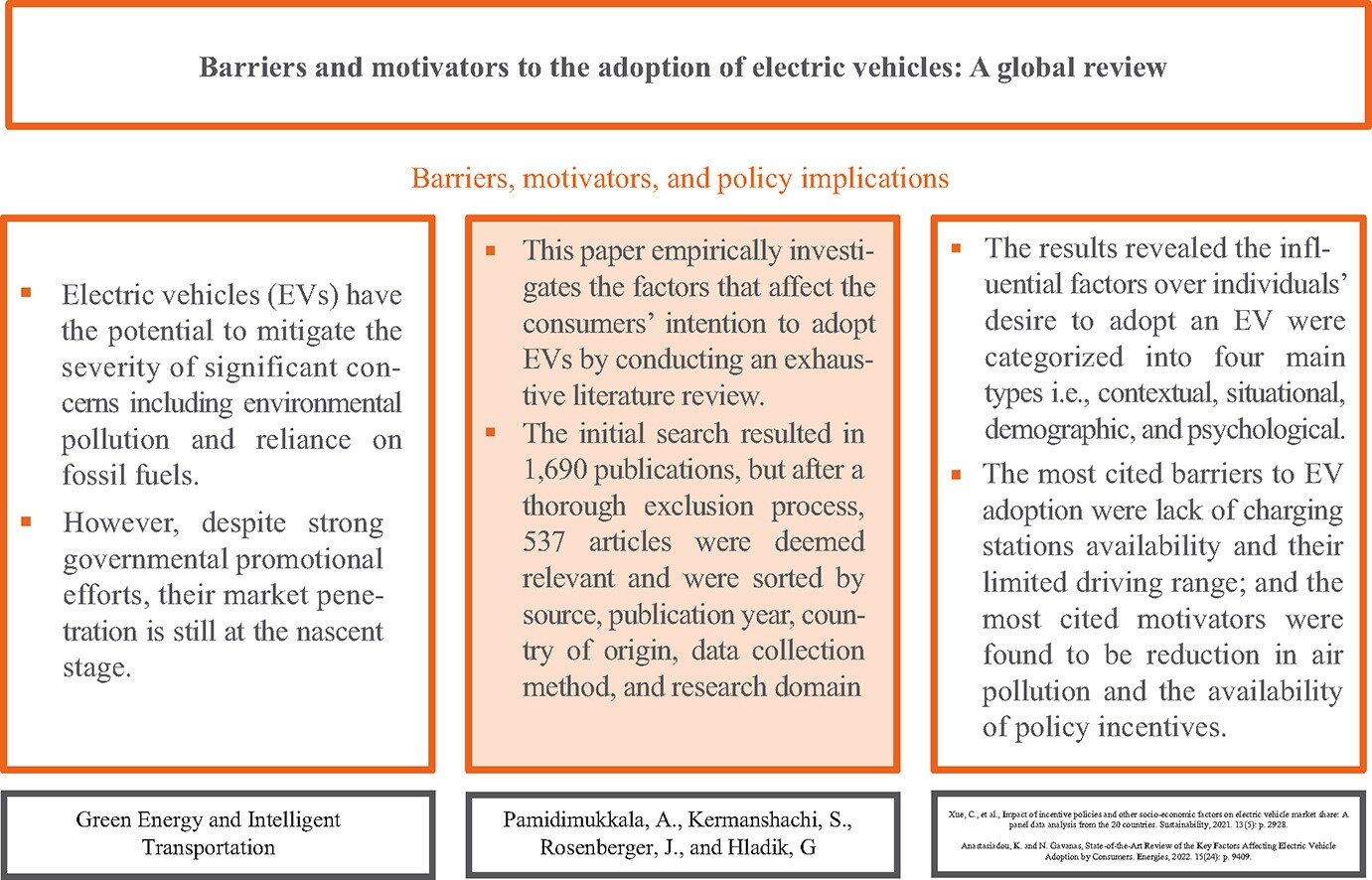
In the ever-evolving landscape of automotive technology, electric vehicles (EVs) have emerged as front-runners in the global push towards sustainability. A study published in Green Energy and Intelligent Transportation delves deep into the motivators and barriers influencing consumer adoption of electric vehicles worldwide, providing a comprehensive review that highlights significant insights for both policymakers and potential EV consumers.
The allure of electric vehicles primarily stems from their potential to address critical environmental issues such as air pollution and dependency on fossil fuels. As the world grapples with climate change and environmental degradation, EVs offer a promising solution by significantly reducing greenhouse gas emissions attributed to the traditional automotive sector.
This shift is supported by the study's findings, which identify the reduction of air pollution as a primary motivator for consumers considering electric vehicles.
However, the transition to electric mobility is not without its challenges. The high cost of EVs, coupled with concerns about their charging infrastructure and driving range, poses significant hurdles.
Consumers are hesitant due to the scarcity of charging stations and the long durations required for charging EV batteries. Such barriers underscore the nascent stage of EV market penetration, despite strong endorsements and incentives from various governments.
The study, which synthesized data from over 500 articles, pinpoints four main categories affecting consumer intentions towards EV adoption: contextual, situational, demographic, and psychological factors. Each category plays a crucial role in shaping consumer attitudes and decisions. For instance, situational factors like the availability of charging infrastructure and the actual cost savings from using an EV influence practical considerations.
Meanwhile, psychological factors, including environmental consciousness and the novelty of using advanced technology, play into the emotional and ethical reasons for adopting EVs.
Governments and policymakers are advised to consider these diverse factors when crafting strategies to enhance EV adoption rates. Incentives such as tax rebates, subsidies for electric cars, and investments in charging infrastructure could address practical barriers.
At the same time, educational campaigns that highlight the long-term benefits of EVs could help shift public perception and foster a more robust market for electric vehicles.
Moreover, the study reveals a demographic trend where younger and middle-aged consumers, particularly males with higher educational levels and incomes, are more inclined towards purchasing EVs. This demographic could be pivotal in the broader adoption of electric mobility, as their acceptance can drive future market trends.
In conclusion, while the path to widespread electric vehicle adoption is fraught with challenges, the potential environmental and economic benefits make it a journey worth pursuing. With strategic policy interventions and continued technological advancements, EVs could significantly alter the automotive landscape, leading to a more sustainable and efficient future.
As the world shifts gears towards greener technologies, understanding and addressing the complex web of motivators and barriers highlighted in this study will be crucial for accelerating the adoption of electric vehicles globally.
More information: Apurva Pamidimukkala et al, Barriers and motivators to the adoption of electric vehicles: A global review, Green Energy and Intelligent Transportation (2024). DOI: 10.1016/j.geits.2024.100153
Provided by Beijing Institute of Technology Press Co.
Citation: Shifting gears: The rising influence of electric vehicles on global markets (2024, June 4) retrieved 4 June 2024 from https://techxplore.com/news/2024-06-shifting-gears-electric-vehicles-global.html
This document is subject to copyright. Apart from any fair dealing for the purpose of private study or research, no part may be reproduced without the written permission. The content is provided for information purposes only.
